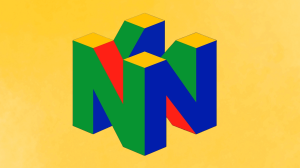The rise in popularity of the new HBO hit show, Westworld, has relit the fire for legitimate discussion into the world of artificial intelligence.
Videos by ComicBook.com
Sylvester Kaczmarek — follow him on Twitter or on his blog — is an award-winning entrepreneur and product manager with over a decade of international, quality-driven IT industry experience broke down what advances in AI could be looking like in the very near future.
AI is finally moving out of the lab and into the home and office, with nearly every big company in Silicon Valley – including Facebook, Google and Amazon – working on new applications for artificial intelligence and machine learning. Those major corporations are also simply buying AI companies outright — as in the case of Google — so, it’s only natural that artificial intelligence is finally going mainstream in the tech sector.
In fact, research firm Gartner in its new “Top 10 Strategic Technology Trends for 2017” report recently named “artificial intelligence and advanced machine learning” as the No. 1 technology trend for 2017. Moreover, Gartner also named “intelligent apps” as the No. 2 trend for 2017 and “intelligent things” (i.e. drones and robots) as the No. 3 trend for 2017.
Artificial intelligence – and the broader notion that computer intelligence may finally catch up and exceed human intelligence – is clearly a hot field. Everything is becoming more intelligent these days – from self-driving cars to computers that can beat humans in classic games of strategy such as chess and “Go.”
In many ways, AI represents a new operating platform that businesses need to embrace to drive competitive advantage. Here are three unique ways that AI is making an impact on the way we live and the way we do business.
Click through the next few slides to see where we are at currently, and where will soon be.
The Rise of Consumer Grade AI
The first introduction of consumer-grade AI was Apple’s Siri, which was a digital assistant for the iPhone that could answer basic questions and find information for you using your iPhone. Since Siri’s debut in 2011, though, a lot has changed as other Silicon Valley tech giants have embraced artificial intelligence and machine learning. Microsoft and Google, for example, now have rival digital assistants that can answer user queries via a smartphone interface.
And Amazon is bringing artificial intelligence into the home via its new Echo, which is a digital device that’s designed to answer questions, fetch information, and play music, all from your kitchen or living room.
And not only that – Echo is also being designed to integrate with intelligent objects within the home, such as intelligent thermostats. This leads to a theoretical scenario in which Alexa could adjust your natural surroundings for you. You might arrive home after a long winter day, and Alexa has already turned up the heat, prepared a song playlist for you and ordered a takeout delivery meal for you.
The ultimate goal, of course, is for consumer-grade AI interfaces to understand natural language questions and be able to hold an intelligent conversation with the user. Once that capability is enabled, these “intelligent assistants” like Siri and Google Assistant will turn into “smart advisers.” Instead of going to a doctor, for example, you would simply using a medical smart adviser that asks you a series of questions and performs a quick diagnosis, all without a need to go to the doctor’s office.

“Intelligence Everywhere” In The Workplace
IBM Watson pioneered the idea of using AI in the workplace. Using IBM Watson, for example, large pharmaceutical companies and doctors might be able to peruse tens of thousands of medical journals within a very short period of time to come up with ideas for an innovative cure. A financial services firm might discover a new trading opportunity by analyzing decades of stock market data.
IBM referred to its flavor of AI as “cognitive computing” because the goal was to position AI as a cognitive boost for the management of a corporation, not as a threat to its employees. Watson didn’t intend to replace employees, the way robots might replace humans on the factory assembly line. And, for that reason, IBM has largely marketed Watson as a friendly, cheerful and somewhat witty colleague.
And now, based on the early success of IBM Watson, other companies are now following with their own versions of an enterprise-grade AI platform. Salesforce.com, for example, recently unveiled its AI platform known as Einstein. And Adobe recently unveiled its new Sensei platform, which it described as a way to bring machine learning and AI capabilities to the creative community.
Gartner has even coined the term “digital mesh” to describe the concept of “intelligence everywhere,” in which every member of an organization has access to supercomputing abilities. Instead of thinking of AI as a giant supercomputer in a secret room of the company that only a few top executives are able to access, the goal is to make AI ubiquitous.
In the same way that we think of the Internet as being ubiquitous or “the cloud” as being ubiquitous, this “digital mesh” would also extend into every aspect of the enterprise, from shop floor to the C-Suite. Consulting firm Accenture, for example, recently released a report (“The Promise of Artificial Intelligence”) that explained how managers would need to embrace AI for everyday tasks such as training and performance tracking.

The Merging Of The Physical & Digital Worlds
Some of the most exciting developments in the AI world are now being used in disciplines such as robotics to give computers “senses.” Think of how much more powerful a supercomputer like Watson would be if it had senses like vision, touch or balance. The goal would be a robot that had the same senses as humans, and perhaps even a few improved ones, like night vision or the ability to hear sounds outside of the typical audible spectrum (i.e. the way a dog can hear a dog whistle that humans cannot).
That may sound futuristic, but just think of all the elements found on your common smartphone these days: cameras, microphones, sensors, gyroscopes and accelerometers. Cameras could become the eyes; the microphones could become the ears; the sensors could become the skin; and the gyroscope and accelerometers could provide the balance (literally, the “motor skills”).
Keep a close eye on the annual DARPA robotics challenges, where university-led teams are creating walking and running robots capable of performing a sophisticated array of tasks on an obstacle course within a specific time period. In addition, look for AI to make an impact on the world of drones and self-driving cars.

Key Takeaways
Artificial intelligence is coming faster than anyone thought possible. Here’s what to watch for in 2017:
- Expect to see more blurring of the line between disciplines such as artificial intelligence, machine learning, natural language processing and deep learning;
- Beware the AI hype machine as companies reposition sophisticated data and analytical offerings as “artificial intelligence”;
- Watch for consumer-grade AI to appear on more and more digital devices beyond just the smartphone and enter the home;
- Understand how it’s possible to leverage “intelligence everywhere” within the enterprise by tapping into new AI platforms from companies such as Google, IBM, Adobe and Salesforce.com;
- Keep an eye on the formation of new industry trade groups, such as the new Partnership on Artificial Intelligence, which includes IBM, Google, Facebook and Amazon as members.

How Does This Lead Into Westworld?
With AI technology gaining traction, it’s a matter of ‘when’ Westworld hosts could be made rather than ‘if.’ The hit drama introduces fans to hundreds of highly intelligent robots who use AI to treat park guests to their wildest dreams. As computers and robotics progress, the programmed hosts will one day become a reality.
Of course, there’s no guarantee that these advanced robots will be used to entertain rich, overly bored theme park guests. This kind of technology has the potential to revolutionize industries outside of service. Hospitals could be equipped with medical advisers who provide nursing staff hands-on, real-time vitals. Schools could be staffed by education assistants who index students’ questions and provide a classroom with individualized attention.
But, yes – someone could absolutely make a theme park and fill it with AI hosts whose goals are to pleasure their guests. However, there might be laws enacted in the future which keep guests from doing anything too morally loose with their paid companions.
In terms of Westworld, technology has plenty of ground to cover before scientists can create Dolores, but it is moving one step at a time.
For now, let’s just hope our future AI attendants don’t follow after their Westworld predecessors and overthrow mankind with a violent revolution. If those hosts are capable of learning quicker than us, then humanity might wish they hadn’t invested research into the coming AI age.









